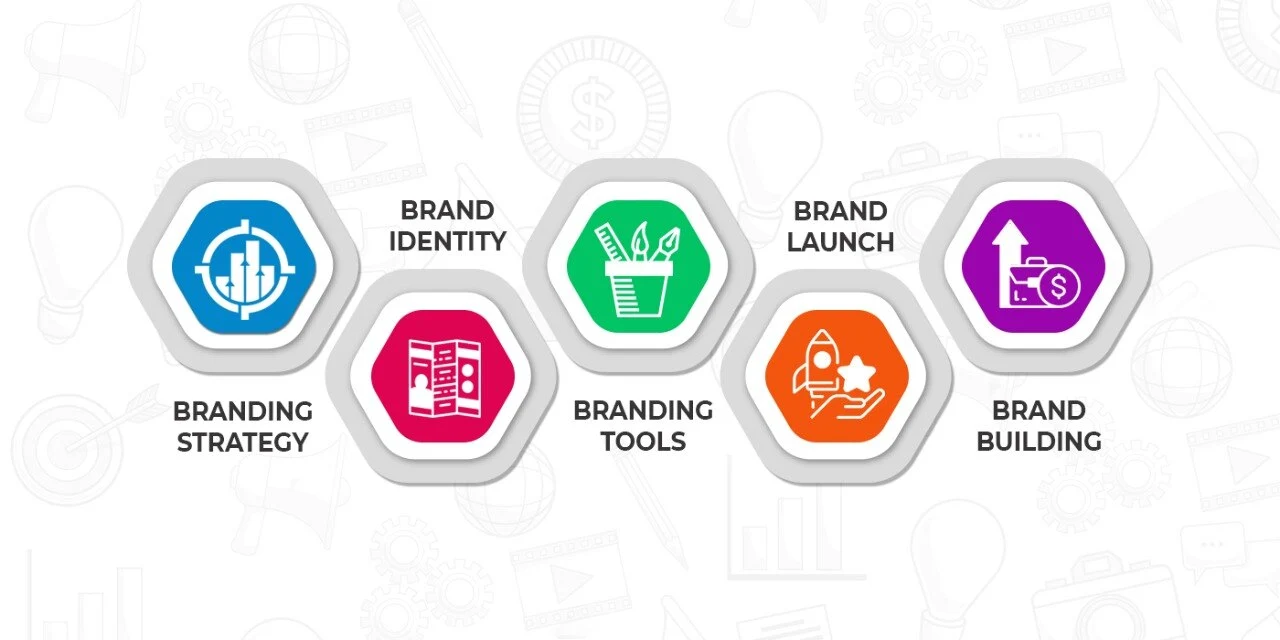WHY BRANDING IS MISUNDERSTOOD

Branding has become a common term that is more often utilized in the creative
industry. However, many people have gaps in their knowledge and understanding of
what branding is and what it is not.
In simple terms, branding can be defined as the art of creating an identity for
a product/service or a company. It is a whole package of distinct features such
as logo, name, colours, symbol, letters, promotions, etc.
The process of branding primarily involves creating and establishing a brand
name. A brand name is a specific name given to a product, service, or concept.
However, branding has more to do other than choosing a name, logo, and design
elements.
Here are a few insights into the reasons for inaccurate ideas associated with
branding.
● Branding is not the same as marketing & advertising
While examining the competitor's marketing strategies, business owners might
feel that the changes those players brought to the strategies are the only
factors that power their brand and led to their success. Considering branding
just as marketing is one of the most common mistakes people make.
In the shift to an increased number of digital marketing channels, most
marketing functions don’t have qualified marketers who can understand the
distinct concepts of marketing and brand management. There is a need for uphill
marketers who specialize in brand strategy.
Branding is not a thing that is depicted in a tagline or an ad campaign. Such
elements are only a visual identification of the brand, while branding is the
personality of a business. It’s a powerful tool that makes people choose your
product, even if they are provided with other alternatives of the same quality.
● Branding is not just providing a logo or a name
Most people associate branding with a website, a tagline, a logo, or even a
brochure.
Consider an example of a company selling some specific products getting their
name’s font style,
colour, or other elements changed. Many people misunderstand this process as
‘rebranding’, as design
elements are slightly or heavily altered. Well, this can be considered as a part
of the rebranding process.
However, rebranding is not just confined to changing the design elements.
● Branding is an intangible asset
In the real sense, a brand is something we cannot touch or see. It is an
identity perceived by the people, which means the perceptions, thoughts, and
feelings that a business firm creates in the minds of people about that
business’s product, services, and the business itself.
Different people can have different perceptions. The process of branding can be
simple as well as complex, it depends on various factors. However, it is certain
that branding is a multilayered process that includes intangible results. These
factors can make it difficult for people to understand what branding really is.
● The term ‘branding’ is often overused or misused
As mentioned earlier, many businesses say they brand their business, but
actually, in reality, they might be bringing changes to their marketing
strategies. This can create misconceptions among the customers or the audience.
Such firms don’t recognize that branding is the total sum of everything that
they do.
For perfect branding strategies, a company must also need to convey what its
goals are like, how they are different, and what they can contribute.
Many board members and directors of most companies come up through sales,
finances, or human resources. Most of them lack brand expertise and are probably
overconfident in this area of business.
● The importance of branding is miscommunicated
Business owners are always concerned if branding adds any value to their
business. This is mostly because they might have been misinformed or do not have
proper knowledge of branding.
Many people may also assume that branding does not provide a quick return on
investment, so it is not an essential strategy. They are forgetting the fact
that a well-designed brand is a long-term asset that adds real value to a
business.
● Branding strategies are communicated poorly
Many consulting firms offer great branding strategies that help companies
establish their position. However, there are still firms that view branding as a
commodity and offer strategies that are difficult to understand or set
unrealistic goals. In such cases, people will misunderstand that the process of
branding is so complicated and inaccessible.
There is another misconception that branding is only suited for big companies.
This is because some of the most popular and most talked about brands are large,
renowned corporates. Actually, the reality is all about how well the companies
use branding for their growth and development.
● Branding is totally or partially in the hands of your clients
Business firms of all sizes might bring several changes to their websites,
marketing strategies, and design elements with an expectation to give a new life
to the brand. In reality, the business does not own the brands, the customers
do.
Whatever promotional strategies are adopted, customers play as a major
contributor that makes or breaks a brand. This is the reason why most popular
brands survive for an infinitely long time even if their products go downhill
for a short period. Those firms have already earned the trust of customers and
dominated as powerful brands in the market. Brands get developed by everything,
including every touch they make with their customers.
The world of branding is evolving day by day. No matter, what the size of the
business is, branding is an essential strategy for business promotion. Companies
shall not limit thinking to the power and potential of a brand.
Branding agencies can
help companies establish their place in their industry in
a way that they prefer to be perceived by the targets. This ensures further
brand development and effective business promotions.

